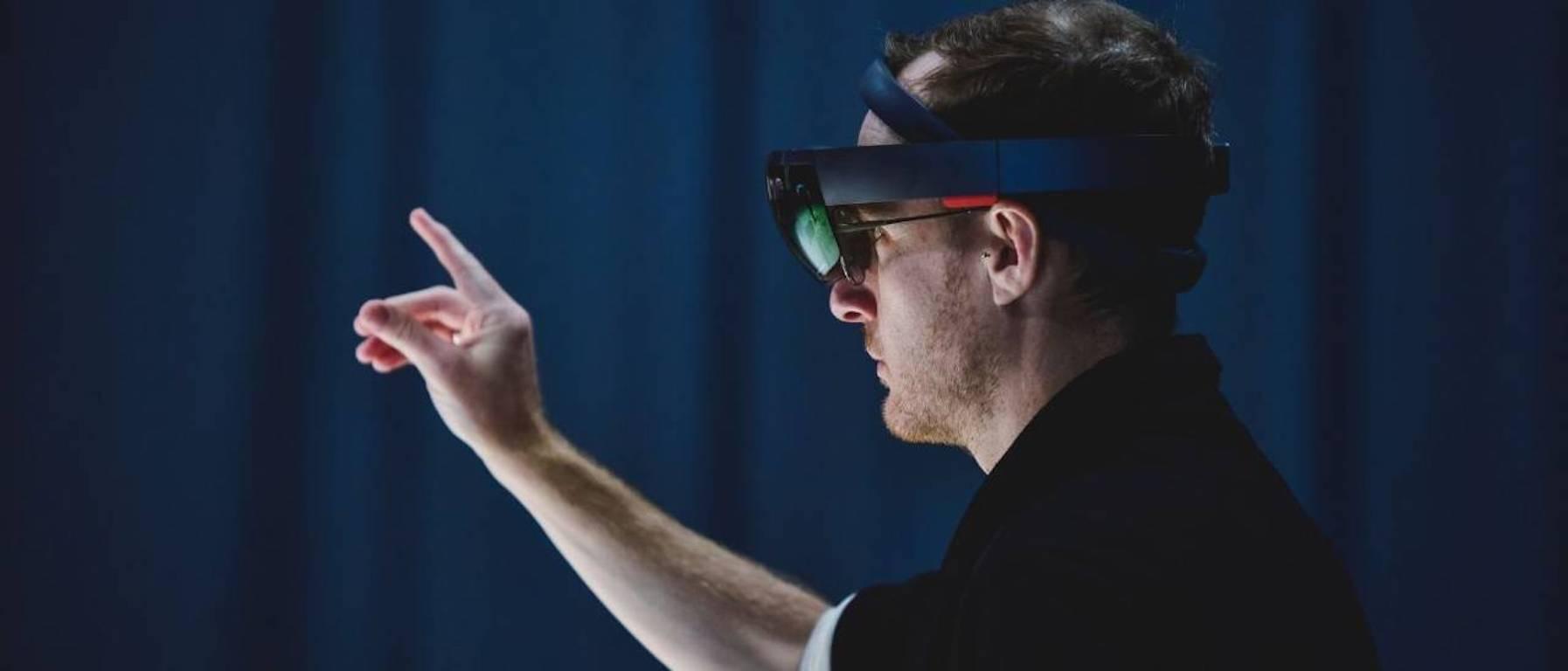Digital artist, Rob Eagle, shares his experience of working on National Dance Company Wales' R&D in dance project, Moving Layers.
"You’ve become a lot more comfortable with moving", Fearghus Ó Conchúir, the outgoing Artistic Director of National Dance Company Wales, said to me on our final day of working together.
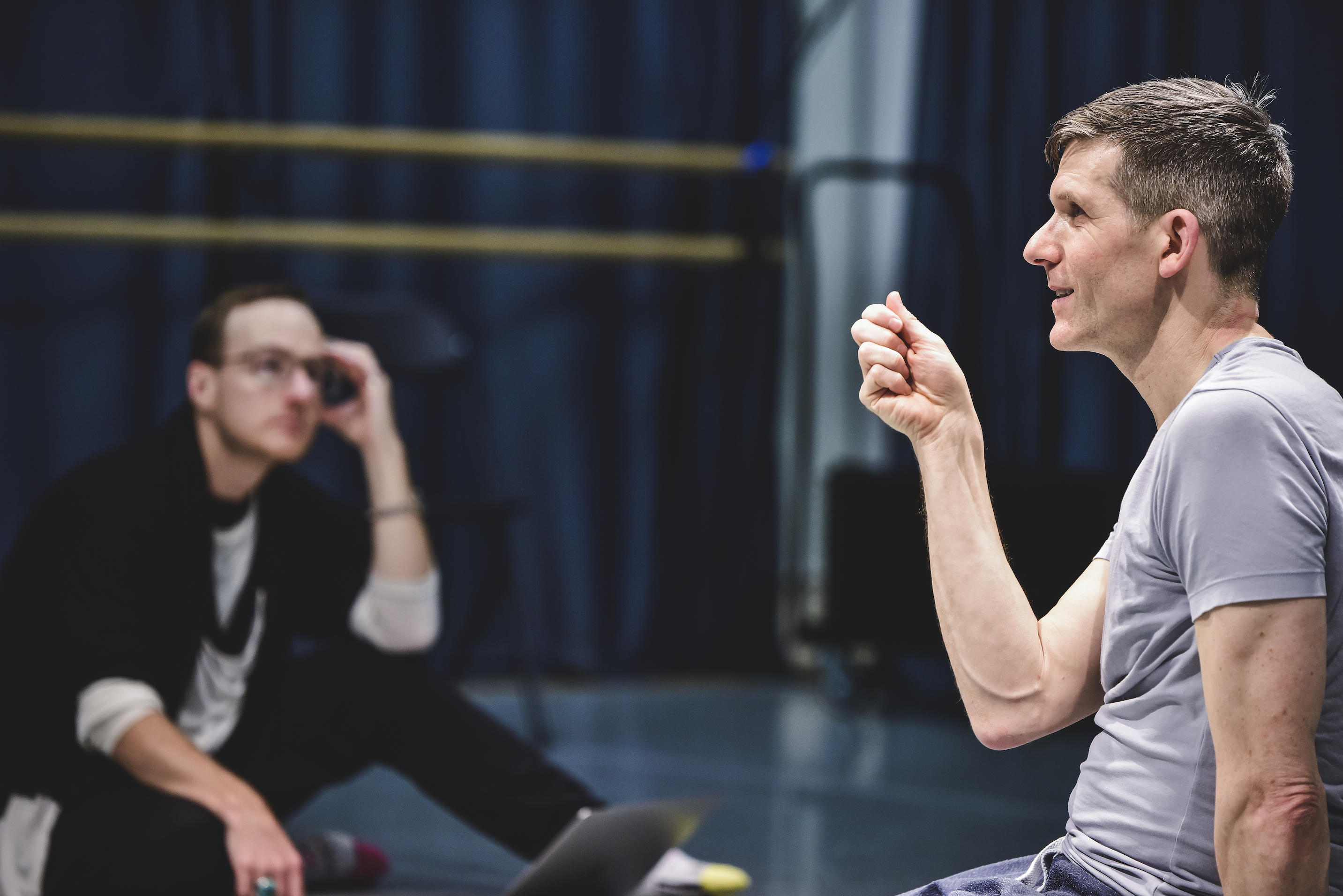
© Kirsten Mcternan 2020
He and I had spent a year planning this R&D project, Moving Layers, made possible with support from Clwstwr. We then workshopped together with two dancers for one week in January and another week in March 2020. In devising how to bring spectators physically into the experience, I was often the stand-in for an imagined future audience member. This involved me being pulled into the centre of the room while they floated gracefully around me, as effortlessly as a stream flows around a stone.
What he said was true - I’m awkward in a dance context. I am a stone. I prefer to leave the movement to the experts. I come from academia, film-making and immersive technology. I make work about the body and for audiences to explore with their bodies, but I dread putting myself on-stage, unless it’s for a lecture. In my professional world, we observe and interact with each others’ bodies from a cool, reserved distance (and even more so as we proceed in a post-pandemic world). Dancers have a different sense of movement and what constitutes personal space. As I tried to overcome my awkward discomfort, this was an opportunity to bring together our two different ways of thinking and making.
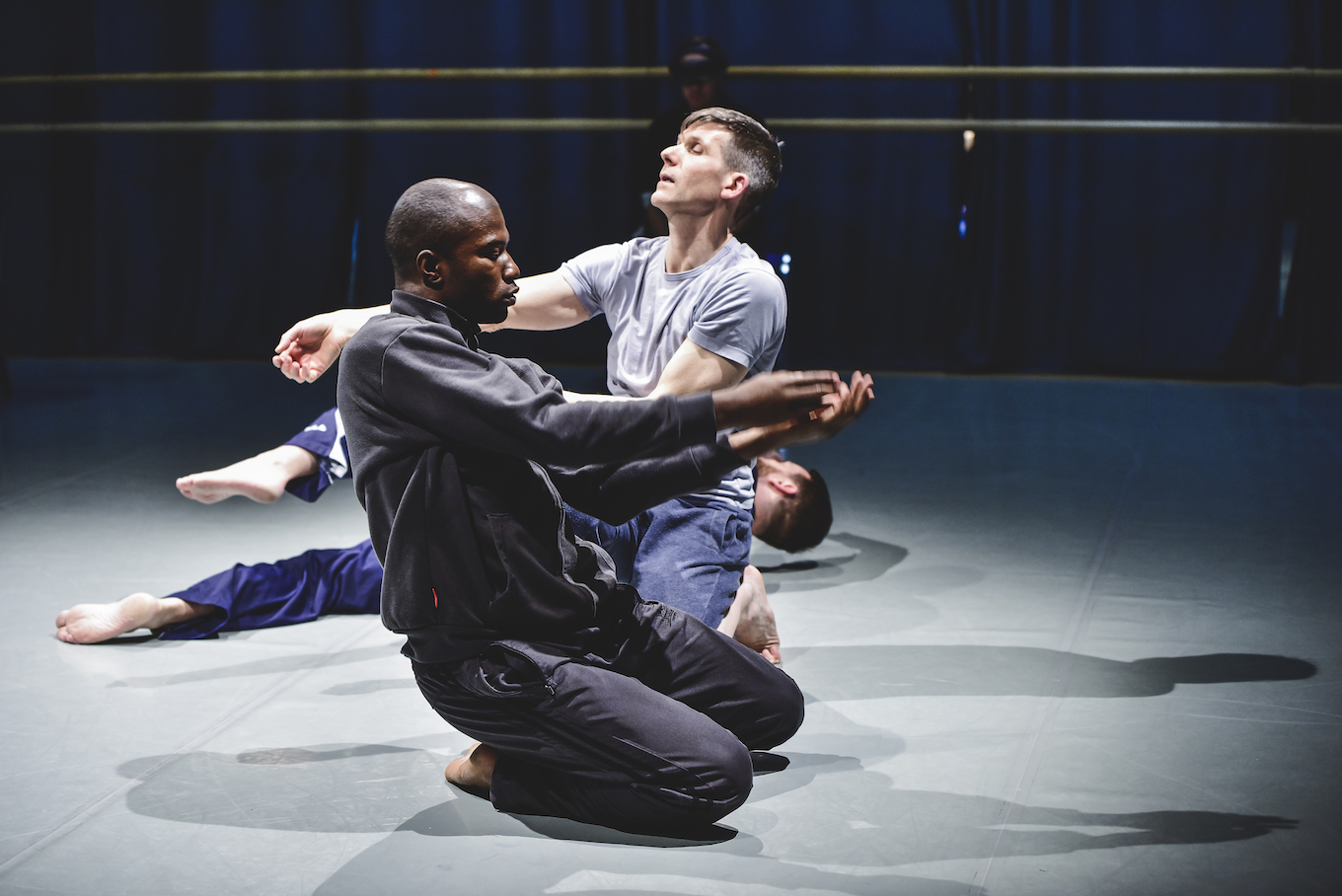
© Kirsten Mcternan 2020
I bring my experience as a queer person into my research and artistic practice to make work that is unapologetically queer in its subject matter and aesthetics, whilst leaving it open enough for non-queer people to have a rich experience of their own. Recently I have focused on using Microsoft’s HoloLens, an augmented reality (AR) headset, for immersive art installations. The benefit of using AR in a headset over a mobile phone is the ability for the audience to interact with the world handsfree, whilst experiencing playful, magical digital layers on their physical world.
In planning our R&D, we wanted to bring together our two approaches so that the technology wouldn’t feel gimmicky or as a separately-developed afterthought added on top of the choreography. The technology and the dance components would have to be so enmeshed that neither would exist on its own as a single entity.
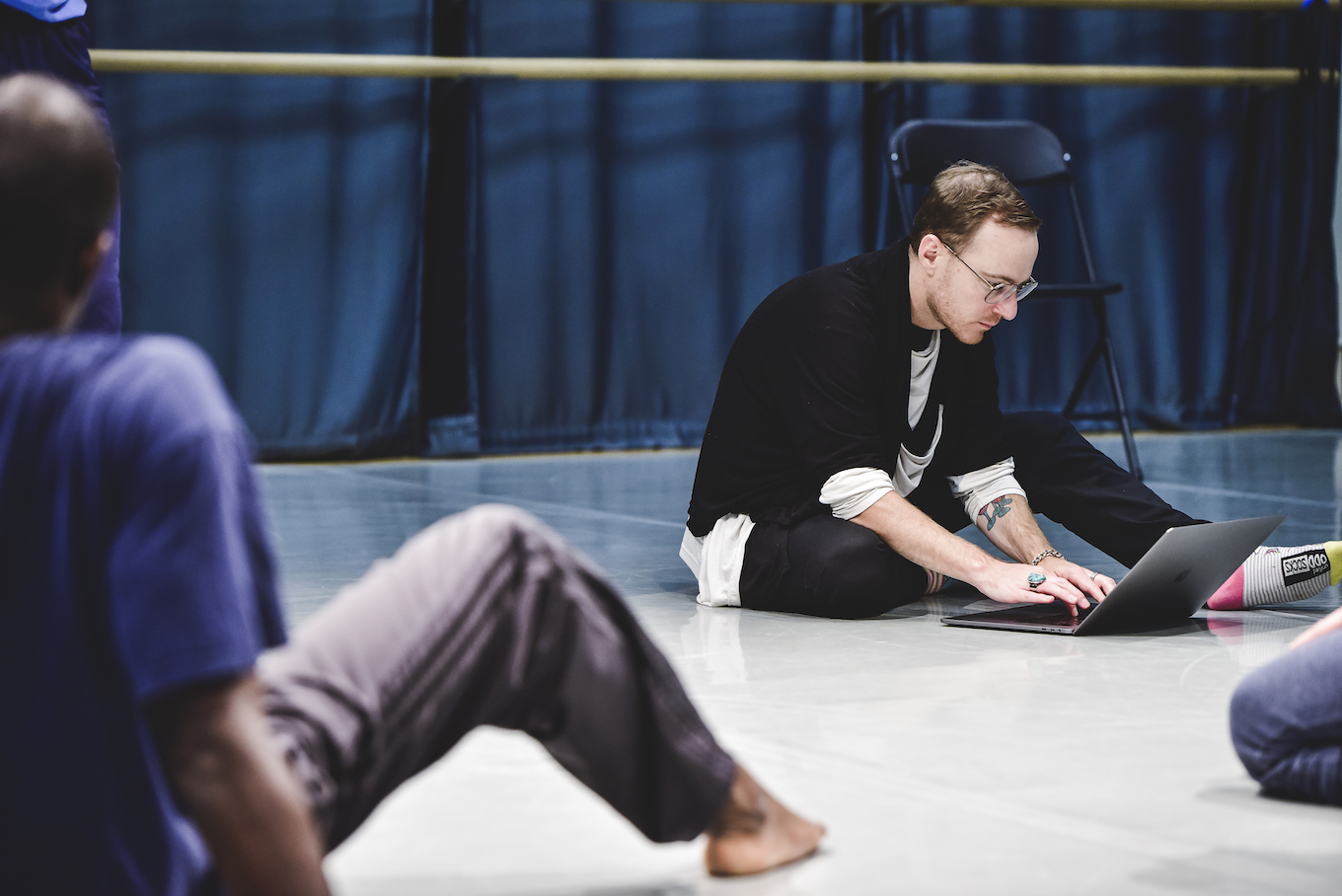
© Kirsten Mcternan 2020
It is easy to feel seduced by new technology - the latest mobile phone or fitness tracker or smartwatch. But with every seduction of a new tech innovation, there is a potential dark side or consequence. How is our data being mined by the corporations making these devices? How is the technology changing our behaviours or how we relate to those around us? And what does this mean for established art forms, such as dance, if technology can replace sets and performers to create a thrilling experience at home and on-demand?
We looked at examples where technology, whether projection mapping, virtual reality or AR, created a world overlaid onto the stage, creating a virtual set. But we wanted, instead, to what would happen when the dance was improvised with the technology and then what would happen for individual audience members. The headset would have to become an active part of the dancers’ experience, not just for the audience to wear.
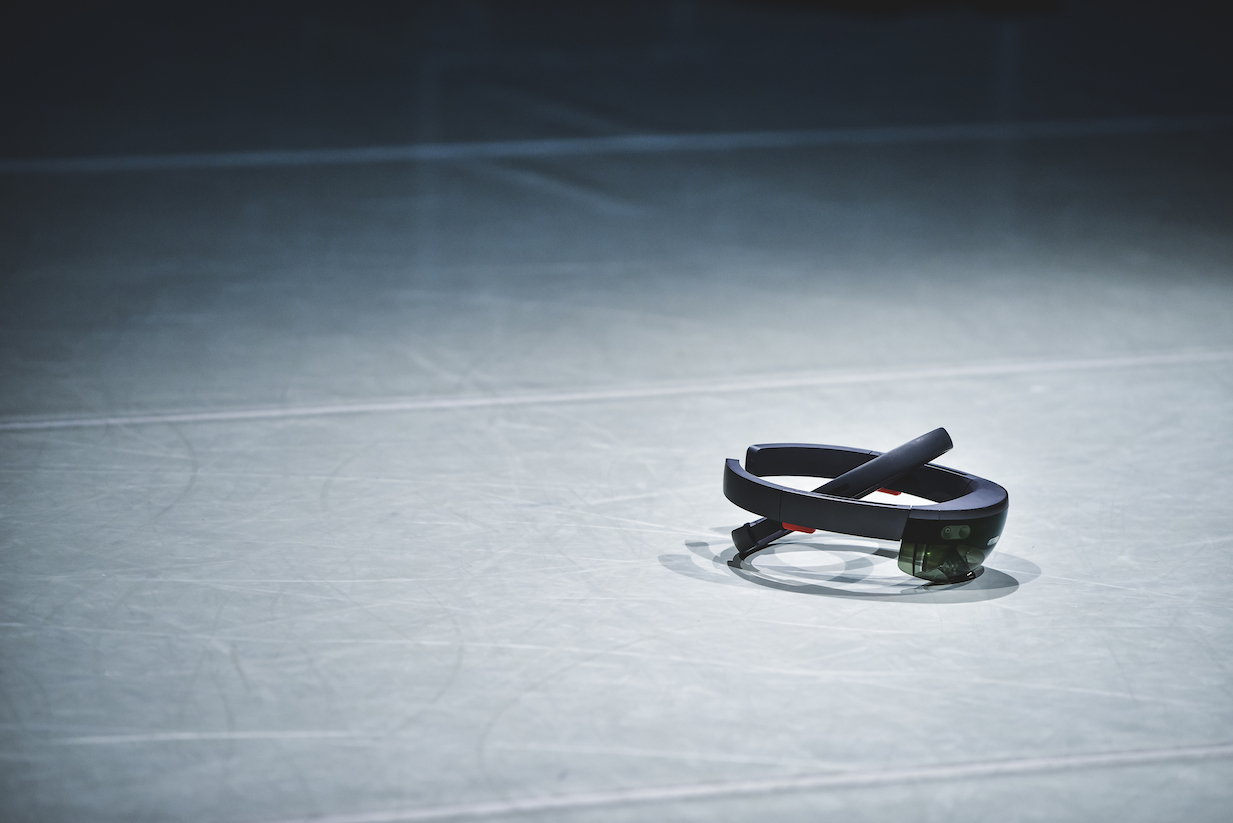
© Kirsten Mcternan 2020
We started working with an off-the-shelf app in the Microsoft app store called Crayon. The app allows the person in the headset to pinch their fingers together and draw three-dimensionally around the room. One dancer would create a 3D design, which eventually became a score for himself or for the other dancer to interpret. The technology was able to facilitate a playful exchange between the dancers.
But what about the audience? We held R&D scratch sessions for small audiences, once in January and again in March, and we asked for their feedback both times. We chose not to project the visuals on a screen but instead allow the audience to imagine what was being created by the dancers in the headset. According to audience feedback, this built up a sense of ‘curiosity’ and ‘anticipation’. This was a chance to allow our audience to become seduced by the headset through their intrigue, their desire to understand more. Only at the end of the Crayon exchange would we hand the headset over to the audience for them to see what had been created.
Another key element of this AR headset is the feeling of immersion in a hybrid digital-physical world. We questioned what it means to be ‘immersed’ in technology like AR or virtual reality, what it is to feel surrounded, perhaps underwater, through a headset. This coincided with a provocative image Fearghus has written about on his blog, the painting of Hylas and the Nymphs.
We took the painting as inspiration for a second chapter to the R&D scratch demonstrations. By seating the audience around the room, we created a shape resembling a pond for the dancers, our nymphs, to frolic and eventually entice individual audience members to join them. Upon donning the HoloLens headset, they would be immersed in an aquatic-inspired bubble-filled magical AR world (a bespoke app we designed with the help of a developer). Our nymphine dancers would take them through this hybrid virtual-physical space, just as Hylas had been seduced and pulled underwater by the nymphs in the myth.
I am proud of what we were able to develop in our R&D. We were able to demonstrate that this sort of technology can work not to replace a live performance or merely to create a gimmicky virtual set. When given to dancers, this technology can open up an improvised exchange that is engaging and poetic for the audience to watch. And when given to the audience, the technology can facilitate an intimate, playful experience that inspires, as they said in their feedback, a sense of ‘awe and wonder’
Learn more about how National Dance Company Wales' explored new ways to make and experience dance using layered-reality technologies with their project, Moving Layers, by going to the project page or watching the video below.

